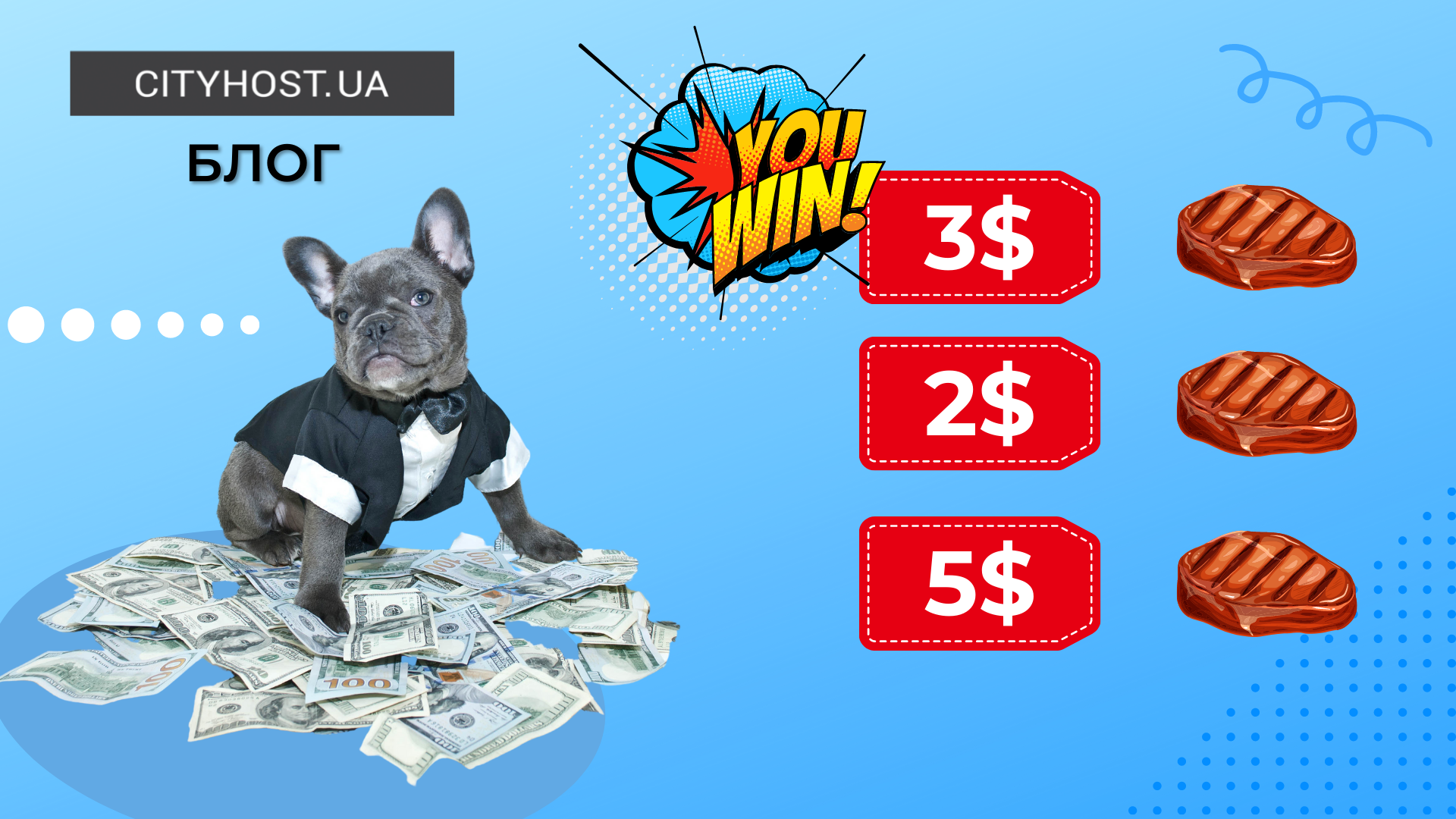
The same product can be sold on different platforms at different prices. If you want to find a store with the best price, doing it manually is long and inconvenient. Therefore, enterprising developers came up with a new way to simultaneously solve the problem of buyers and help stores promote their products.
What are price aggregators?
Price aggregators are services for comparing prices, one of the channels of online trade that allows online store owners to attract new customers.
One of its advantages is that even a novice entrepreneur can quickly find customers through such a service. By connecting his store to the aggregator, the entrepreneur immediately gets to a popular site with thousands of daily visitors. Having set a competitive price and fulfilling all the conditions of work on the platform, it has every chance to be at the top of the list.
Customers buy a product by following a link from an aggregator, and a whole chain of effects is triggered. In addition to sales, the seller also receives conversions to the site, which increases his ranking in search engines. In addition, some customers can remember the domain name of the site and continue to buy directly in the store if they like the assortment and service.
Owners of aggregators receive profit by placing store offers on their pages for a fee, sellers get new customers, buyers find goods at a good price - everyone wins.
How does an aggregator differ from a marketplace? The aggregator compares prices and forms them in the form of a showcase, but after choosing a seller, the client goes to his site, which allows you to promote an online trading platform. A marketplace is a large online market, where all sellers are inside the resource itself and place goods on its pages. Figuratively speaking, aggregators are more like search engines that compare and rank the result, but do not sell anything and do not have their own content.
How to use an aggregator - a view from the client's side
When you visit the price aggregator website as a customer, you will think that you are in an ordinary online store. But there is one significant difference — goods from many different sellers are placed here and you can compare offers for one item.
Aggregators also have similarities with the marketplace. Products are grouped by category, you can choose sections that are traditional for many stores:
Cars and motorcycles
Goods for home, garden, summer cottage
Products for animals
Computer Engineering
Products for animals
Gifts
Furniture
Office, etc.
After selecting a product, the system will show how many offers there are from different stores.
Read also: TOP-3 CMS for creating an online store
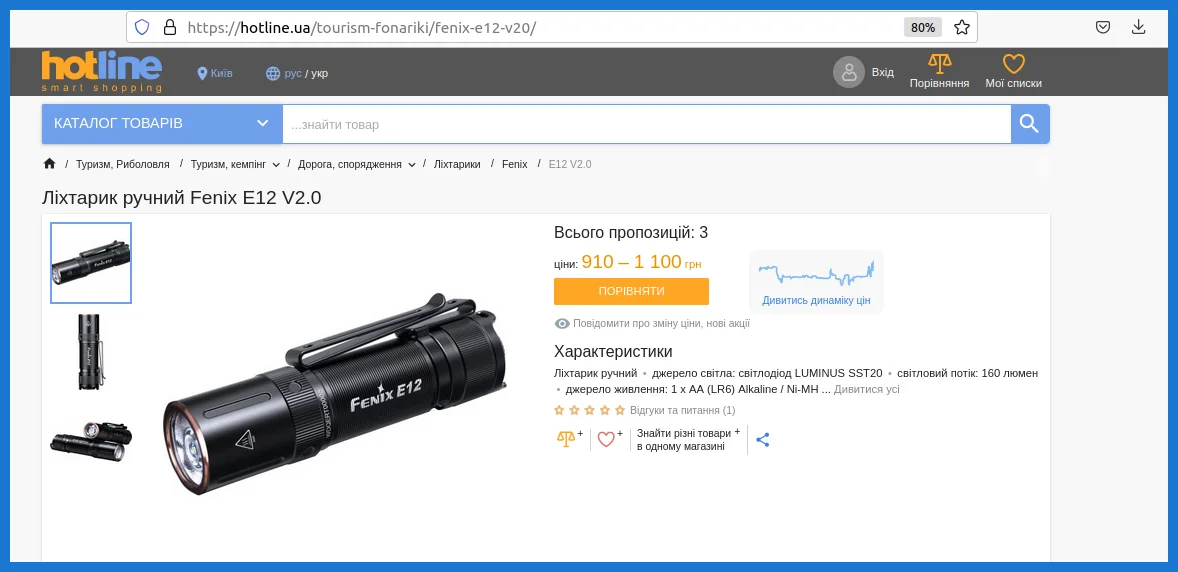
The result is formed into a rating, which takes into account not only prices, but also reviews and ratings of buyers, the number of orders completed per month.
You can immediately see the average rating of the store, reviews, the possibility of issuing installments, payment methods, warranty. There are filters that allow you to leave only a certain category of goods — for example, only with cashless payment or only official brand stores.
As you can see, the position of the store does not depend on its popularity or age - newcomers can successfully compete with tycoons and even win if the buyer decides that their offer is better.
The lowest bidder doesn't always win (although that matters). Reviews and other factors also influence the buyer's decision.
By clicking the "Buy" button, you already get to the seller's site and then interact with him directly.
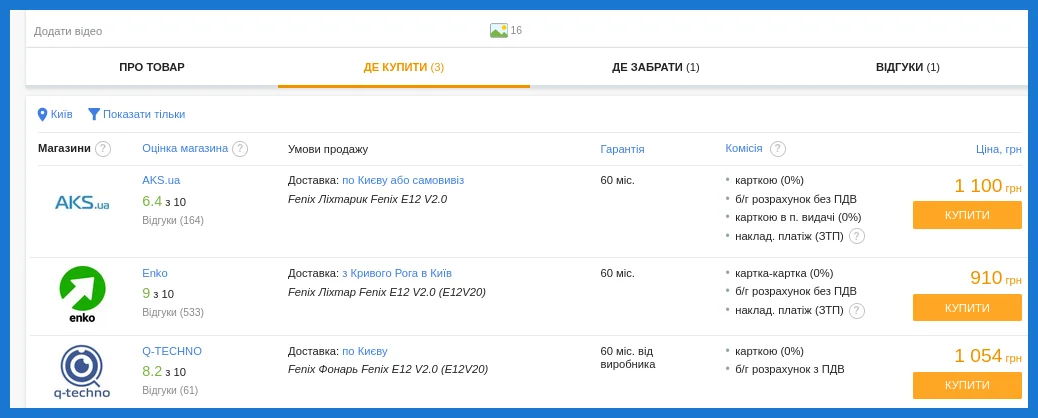
How to place your product on the aggregator — a view from the seller's side
Each aggregator has a section with an offer to connect the store to the service. There may be another wording - to become a partner, to post a catalog or price list. The section is usually placed at the bottom of the site (in the footer) and does not attract much attention.
You need to remember that you cannot create a store on an aggregator — first you need to develop a site, buy hosting , register a domain, launch a store, and only then connect the finished site to the catalog.
Payment for cooperation is made for unique conversions (another parallel with search engines and contextual advertising).
To connect the store to the aggregator, you need to fill out a form, for example, the following.

Then the moderators of the aggregator review the application and make a decision on cooperation. The store can be refused without explanation.
It is not enough to put the lowest price in order to get to the top of the list. Moreover, a very small price tag, on the contrary, will seem suspicious to buyers. The rating is based on the quality of the product and service, so it can only be earned by hard work.
Also, many services offer additional services — this is advertising in price aggregators, which look like banners on the main page, in the issue list, in sidebars. The cost of advertising depends on the size and area of the page - the more potential views, the more expensive.
Read also: Marketplaces - how to sell goods without having your own online store
Who is the price aggregator suitable for?
Almost all categories of goods are sold on price aggregators. But these platforms work best for large purchases, which are usually made thoughtfully and after careful analysis of the offers.
These include:
Furniture
Household appliances
Equipment for tourism
Auto-moto equipment, spare parts, accessories
Equipment for gardening
Musical Instruments
Computer Engineering
Do you already have an online store and plan to connect it to the price comparison service? Let's consider the most popular price aggregators of Ukraine.
Hotline.ua
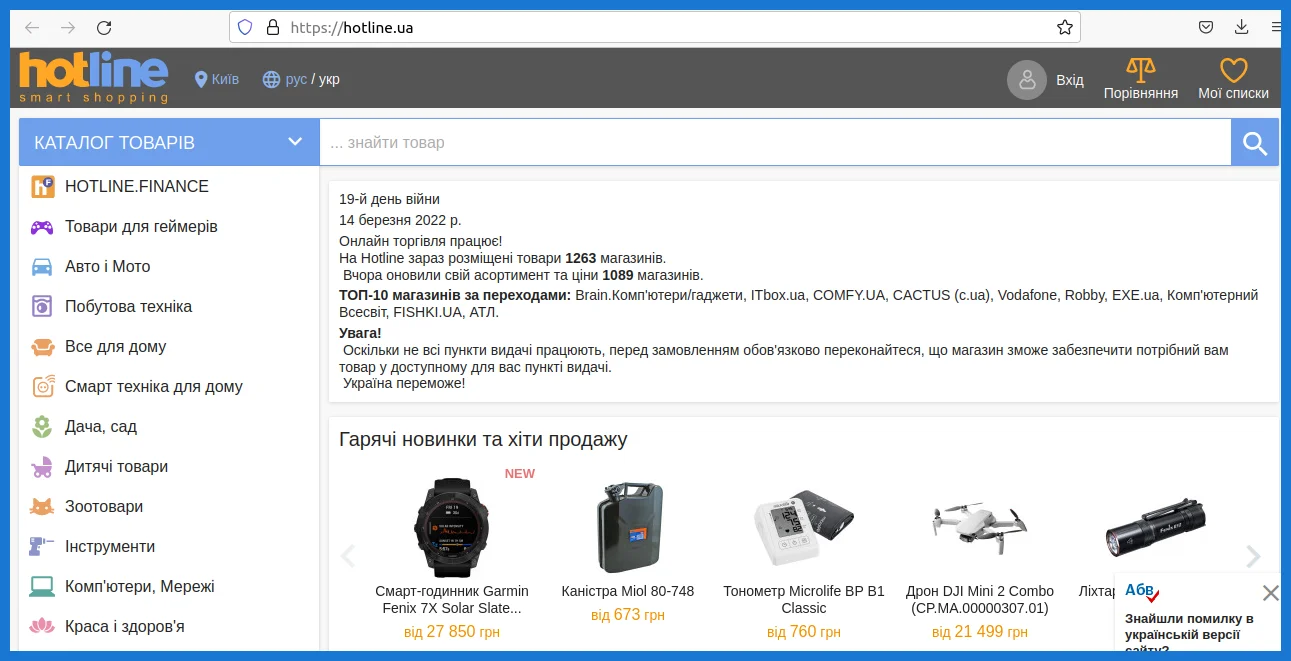
Hotline.ua is a Ukrainian company that has existed since 1992. From the beginning, the company worked as a printed price catalog of computer equipment, and in 2006 it moved its activities to the Internet.
The website of the service states that 370,000 users visit it every day. Thanks to geotargeting, you can choose a local audience and target advertising to residents of certain areas. Currently, Hotline has 1,251 stores.
Of interest is the Hotline.Finance section, where you can compare different insurances, find out your credit rating, and get a loan.
There is also a buyer's guide on the website, which contains articles with recommendations on choosing the most popular goods.
The service has a separate mobile application with a score of 4.7 out of 5 on GooglePlay. The site itself has many positive reviews on both Google Maps and the Facebook page, but there are also complaints about the removal of negative comments about stores.
After the start of the full-scale invasion of Russia into Ukraine, an announcement was placed on the website that the service continues to work, but the information regarding the operation of the store drop-off points needs to be clarified.
Price.ua
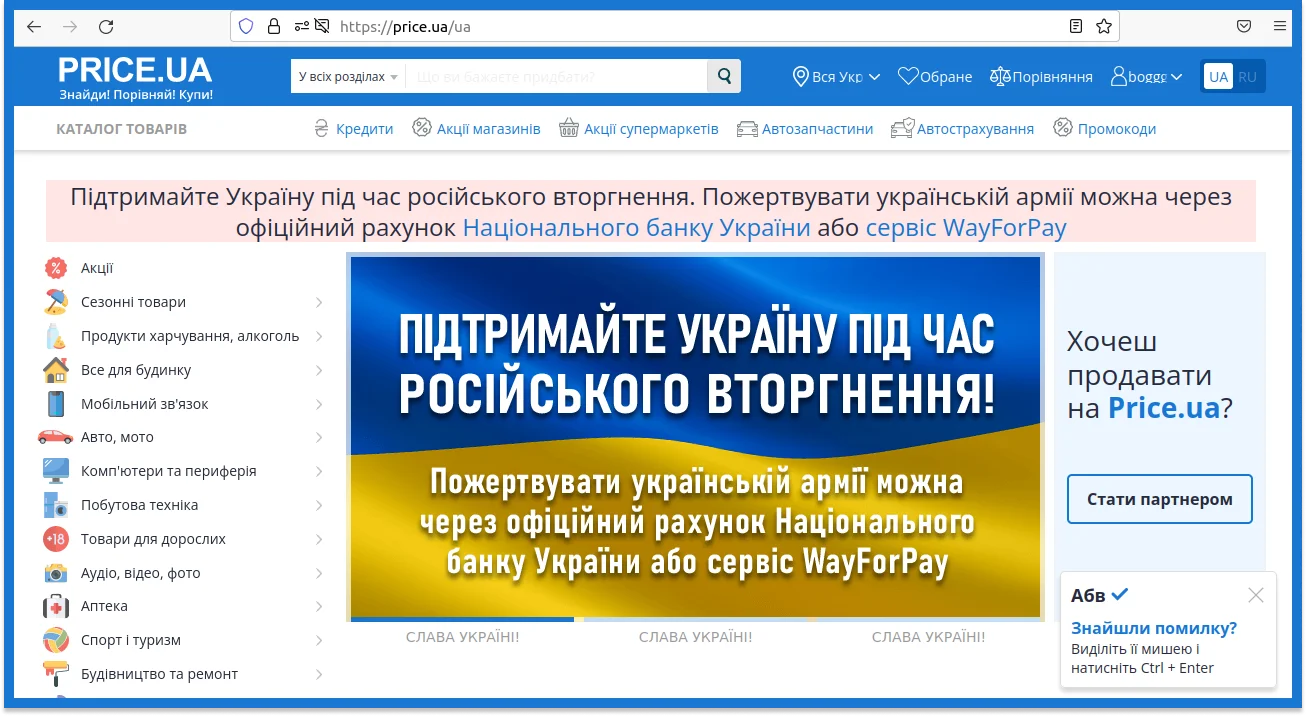
Price.ua is a price catalog that has been operating on the market since 2001, for more than 20 years. Developed by the Universal Commerce Group holding, which creates a variety of products for online commerce, which in turn was created by a group of Ukrainian businessmen.
More than 2,100 stores are connected to the platform. The aggregator is formed according to the basic principle of similar services: a traditional catalog, an offer of popular categories and individual products, novelties. A special feature is a slider with banners in the header of the main page. After the start of Russia's invasion of Ukraine, advertising banners were replaced by social ones dedicated to what is happening in the country.
Read also: How much longer will we feed the Russian IT industry?
You can take out a loan or buy a car license on the service, just like on the Hotline.
The advantages of the platform are smart filters and voice search for buyers, an improved CRM system for stores , regional targeting, and automated mailing .
But Price.ua has a lot of negative reviews from sellers with complaints that bots call up the budget. There are more positive reviews among buyers, but there are also complaints about insufficient moderation of stores, which is why fraudsters happen. We hope that the service is working on these issues.
The service also has a mobile application, but the rating so far is 2 points out of five — it needs to be finalized.
Sravni.ua
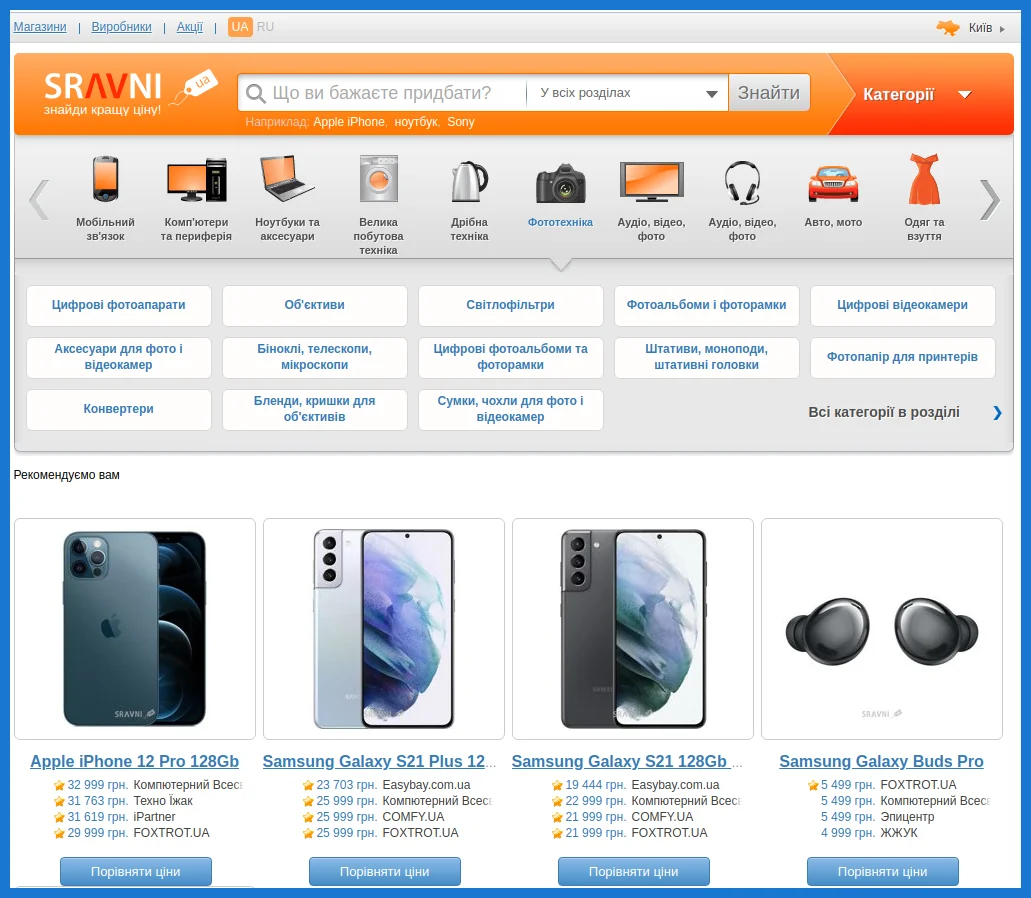
Sravni.ua is another price aggregator with a large catalog in which there are many different categories. Like Price.ua, it belongs to the Universal Commerce Group holding.
The assortment is really very wide - here, in addition to ordinary smartphones, electric kettles and laptops, you can find printers and copiers, binoculars and telescopes, security systems and many other specific products.
The service is not active in social networks, there is little information about it in open sources and there are no reviews.
E-catalogue
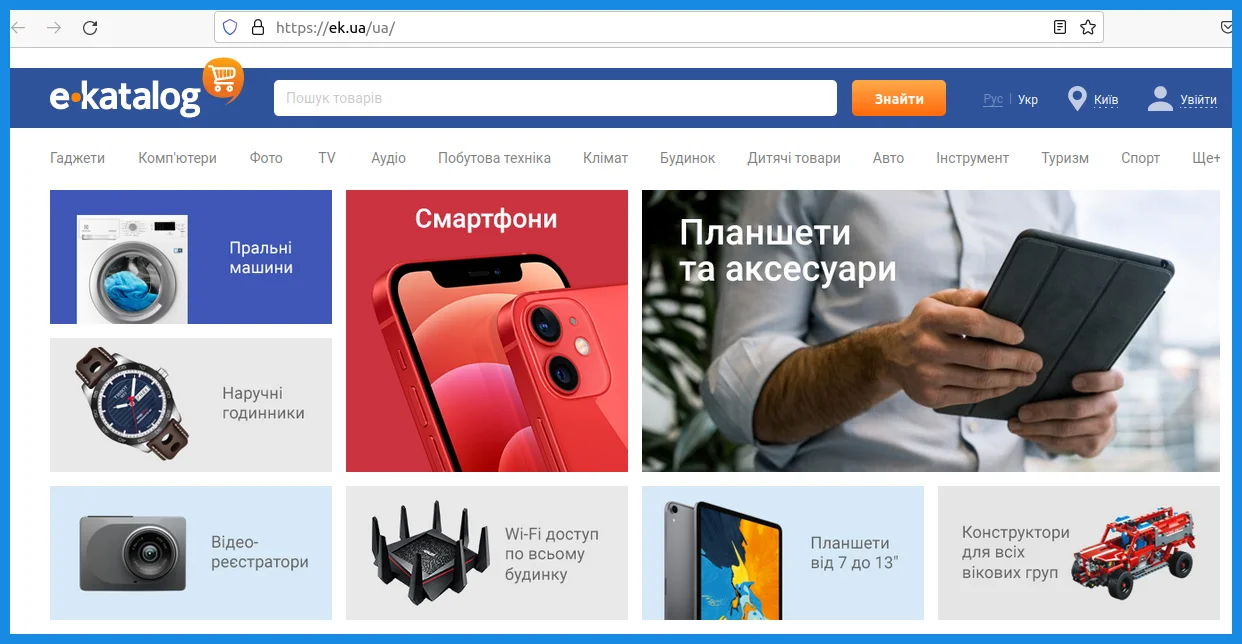
E-catalog is a catalog for comparing prices, one of the projects of the Nadavi.net service. It is mainly focused on various appliances (computer, audio, photo, car and motorcycle, for the garden, household, for repair), but it also has children's goods, sports, tourism and accessories.
More than a thousand stores are connected to the system, which is quite a lot, considering that the range of categories is not as wide as in the services described above.
Also has a mobile version rated by users at 3.7 points on Google Play. Negative reviews are reviewed and corrected by the developer, so the application promises to be quite convenient.
The site has many different articles with recommendations for choosing products and reviews of popular items.
With the beginning of the war, the service announced on its Facebook page that it would stop any cooperation with Russian clients, the version for users from Moscow no longer works. It is worth noting that the service was quite popular in Russia, and thousands of dollars remained on the accounts of Russians, which the platform froze, saying that these were sanctions.
The owners of Nadavi also reported that due to the difficult situation in the country, new Ukrainian stores can be added for free to E-katalog and Magazilla (another project of the company), and there is also an option to add a Ukrainian version in Poland.
There are not many reviews on the service, there are both good and bad. Among the negatives is the same insufficient moderation of stores, a typical problem for aggregators. Checking all partners (and there are thousands of them) requires a careful approach, and not all price catalogs can boast of an ideal composition of stores working with them.
Magazilla
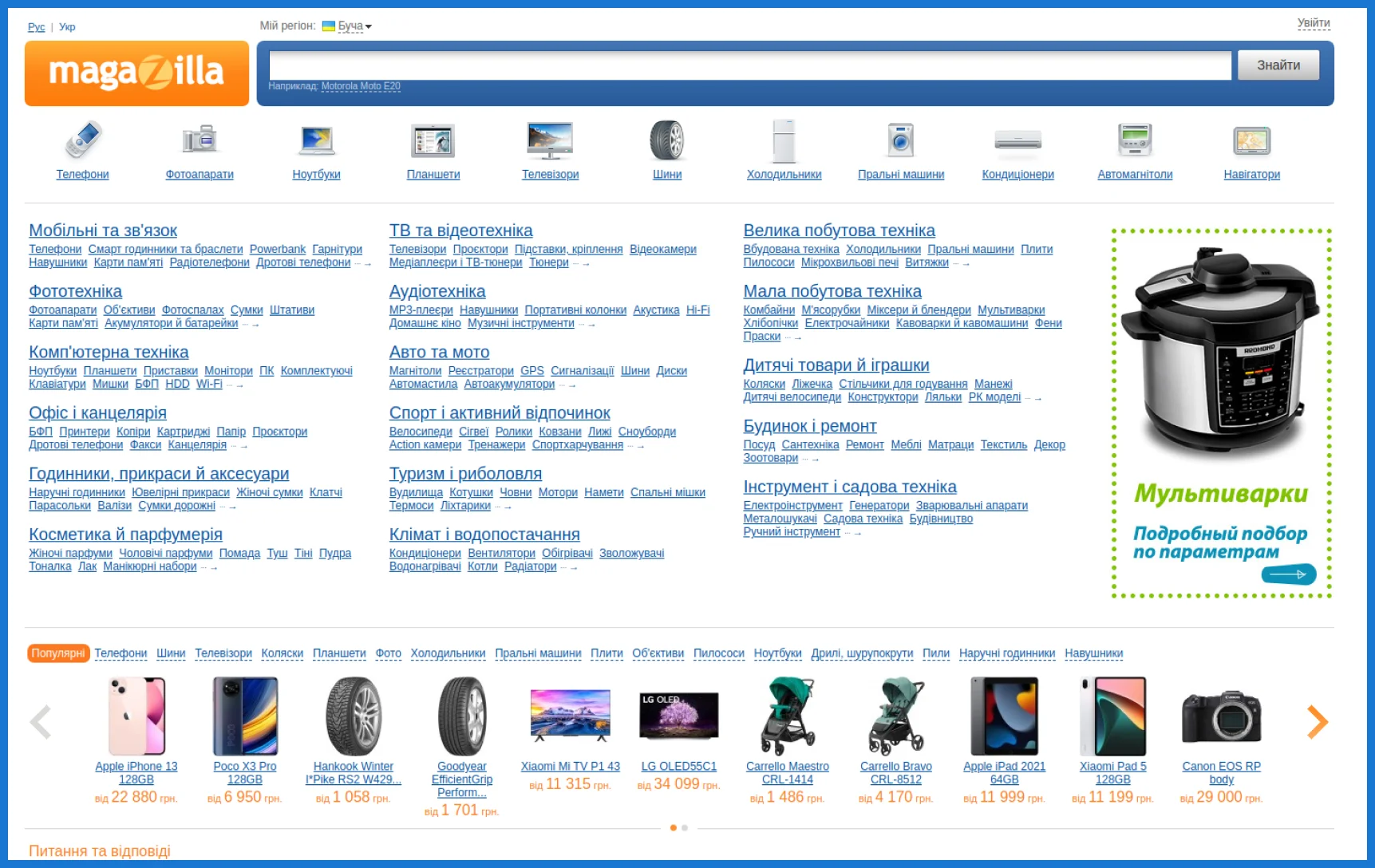
Magazilla is a brother of E-katalog and also belongs to Nadavi, so it is worth saying right away about the consistent policy of both services. The Russian version does not work here either, cooperation with clients from Russia is closed, and Ukrainian stores can be added for free.
The service is similar to its relative in terms of categories (mainly equipment), but differs in design — it is more modern in the E-catalog.
More than 1,000 stores are placed on the platform (as well as in the E-catalog, which suggests the mutual integration of these two platforms). There is no mobile version of Magazilla, just like online reviews.
***
Price aggregators are mostly similar, because they share the same principle of operation - to collect as many good products as possible from different stores and compare them with each other. The differences may be only in the design or some additional tools. Therefore, the main selection criteria are the reputation of the platform, ease of use and quality of technical support.
But it is not necessary to choose one price aggregator. The more platforms for attracting customers, the better. You can simultaneously work with at least ten services - the main thing is that it is profitable for business.









